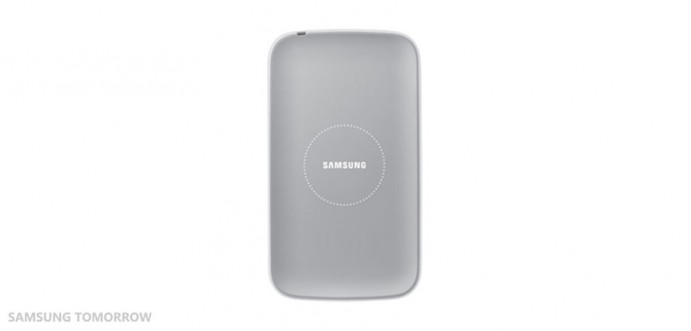[Editorial] Wireless Smartphone Charging as an Industry Standard
on February 17, 2015

In 1891, renowned inventor and futurist Nikola Tesla became the first person to introduce inductive charging when he successfully demonstrated the wireless transfer of energy. However, it took over a century for this technology to find its way into mainstream consumer use.
Over the past few years, wireless charging has emerged in the consumer electronics market space, mainly in the form of smartphones and smartphone accessories. This technology is now being integrated into all sorts of technological devices, appliances, public spaces, and even vehicles, as companies look to make power cords obsolete and make the world Tesla envisioned a reality.
Until now, commercial products have mainly used the “magnetic-inductive” method of charging which involves coupling a device to some sort of physical dock. If you have ever used an electric toothbrush or shaver, then you are probably familiar with this type of inductive charging.
Consumer Benefits and Industry Solutions
Wireless charging comes with several benefits to the consumer that will bring about a new wave of multiple device integration and convenience. The most obvious benefit is the absence of power cords that are so easily tangled, broken or lost. Consumers have been crying out for a simple wireless charging solution that frees them from the need to carry several different chargers for multiple devices. The goal has been to provide them with the ability to utilize one wireless charging dock that is compatible with all the devices they already own as well as all the devices they buy in the near future.
To this end, the industry at large has been working together for some time to establish a series of organizations to standardize wireless charging technologies. Currently there are three: the Wireless Power Consortium (WPC), and its Qi standard, the Power Matters Alliance (PMA) and the Alliance for Wireless Power (A4WP). Samsung is a member of all three groups.
These technologies have already been implemented across a broad spectrum of our everyday lives. You may not even be aware of many of them. Wireless charging pads powered by the Qi standards can already be seen at select McDonald’s locations in London, while many Starbucks locations in the United States now sport PMA powered charging stations.
In January of this year, the PMA and A4WP announced that they would join forces to offer even better wireless charging features for a variety of devices. This means that very soon, integrated restaurants, airports, public spaces, vehicles and living spaces of all descriptions will finally free consumers from the burden of having to remember to carry their power cords. They will soon be able to move about freely without the worry of running out of battery power, or taking up unnecessary real estate in their bags.
Samsung’s Commitment to a Wireless Future
In late 2000, Samsung created a special team designed exclusively to focus on wireless charging, and began extensive research and development. The goal was to develop a technology that was easy and convenient for consumers, in order to promote and drive the widespread adoption of wireless technology standards. As they soon learned, several obstacles had to be overcome for wireless charging technology to succeed in the market, most notably the size and price of some of the most crucial components.
This hard work finally came to fruition in 2011, when Samsung introduced its first commercial wireless charging pad for Droid Charge (SCH-i510) in the US. Since then, Samsung has provided wireless charging covers and pads as a core accessory alongside many of our flagship smartphones such as the Galaxy S4 and Galaxy Note 3 in 2013 and the Galaxy S5 and Galaxy Note 4 last year.
A key factor in helping to bring wireless charging technology into the mainstream has been making the cost of materials more manageable by strategically partnering with the right raw material suppliers and component companies.
We also discovered new ways to merge and combine components in a more efficient way, which allowed our technology to generate more power and take up less space. In the early stages of inductive charging, the Galaxy S4 charging pads were comprised of about 80 separate components. For the Galaxy S5, our developers were able to bring down the number of components drastically, to a much more manageable 50, and efforts are being made to decrease this number even further. Our unique ability to combine parts like this and utilize components that are capable handling more than one function, like our chip, has allowed commercialization to finally become a reality.
We also focused on finding new ways to make the components themselves smaller and thinner. The IC chip in the Samsung Galaxy Note 4, for example, is only 0.8mm thin. Since wireless charging related products were introduced in the market about ten years ago, the size of wireless charging receiver components has decreased to one tenth of their original size. And the thickness of the coil has been minimized to a third of its original size. As such, we have been able to cut the costs of the main components to one tenth of the price in just ten years.
Wireless charging has come a long way in terms of charging speed as well. Two or three years ago, wireless charging was only twenty to thirty percent as fast as wired charging. But since then, we have been able to double the charging speed.
2015 – A Landmark Year for Smartphone Wireless Charging
Last year, components that support multiple standards on a single chip were released. Given that it usually takes around 6 to12 months to integrate new components and put them on the market, it is expected that several of these products will be available to consumers this year.
This comes as the ecosystem for wireless charging continues to rapidly grow and mature. In addition to IT companies, leading brands from a wide range of industries, such as consumer electronics, semiconductors, mobile services, automotive, furniture, software and others have joined the effort and are working closely together.
It is expected that 2015 will be a landmark year for the growth of wireless charging deployment, as wireless charging stations will begin to appear in more and more public places. Samsung will accelerate to democratize this wireless charging technology with compelling smartphones. With our upcoming Galaxy smartphones, users will be able to enter a new wireless world like never before.



